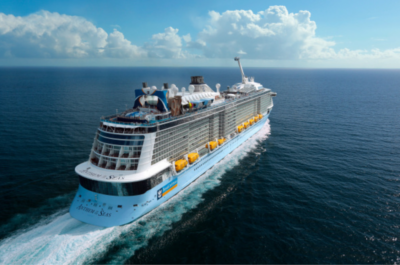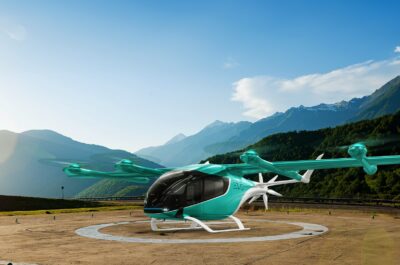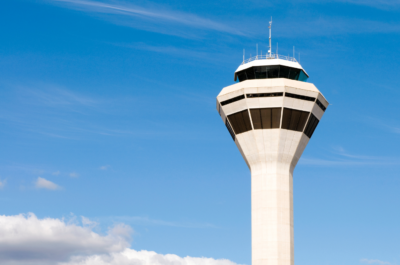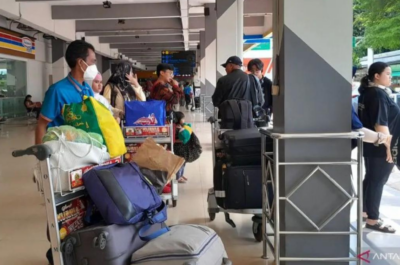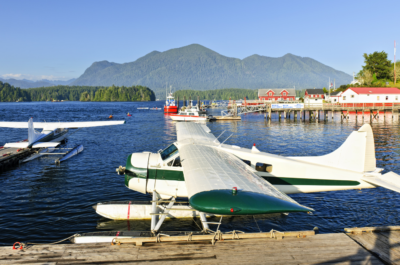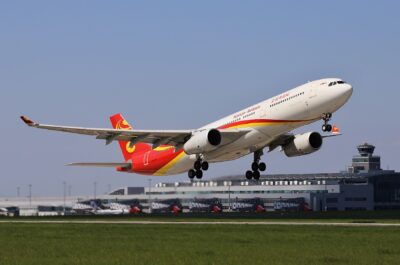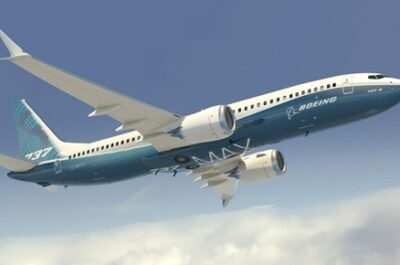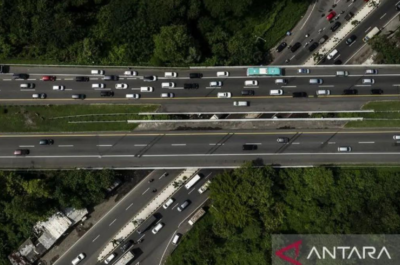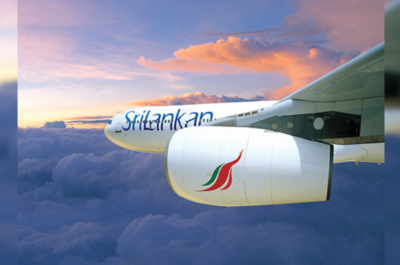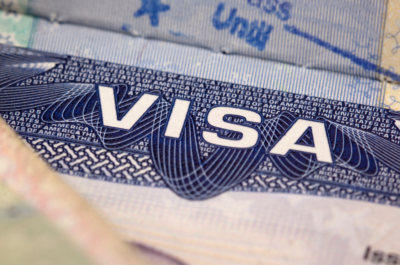…
 As an industry, the airlines just can’t seem to fly very high or very far. Last fall when oil prices dropped rapidly it looked promising on the cost side, but revenues soon began falling even faster than the price of fuel and the optimistic outlook, once again, turned negative. The “industry”, for this analysis, considers the 9 largest US airlines: Delta (DAL), American (AMR), United (UAUA), Continental (CAL), Southwest (LUV), USAir (LCC), JetBlue (JBLU), Alaska (ALK) and Air Tran (AAI). Collectively these airlines and their affiliate partners carry over 88% of the US domestic market share.
As an industry, the airlines just can’t seem to fly very high or very far. Last fall when oil prices dropped rapidly it looked promising on the cost side, but revenues soon began falling even faster than the price of fuel and the optimistic outlook, once again, turned negative. The “industry”, for this analysis, considers the 9 largest US airlines: Delta (DAL), American (AMR), United (UAUA), Continental (CAL), Southwest (LUV), USAir (LCC), JetBlue (JBLU), Alaska (ALK) and Air Tran (AAI). Collectively these airlines and their affiliate partners carry over 88% of the US domestic market share.
For the recent 2nd quarter, excluding special charges, the airlines noted above lost $959 million on $26.56 billion in revenue. Including special charges, the loss increased to $1.55 billion.
Historically, the 2nd quarter is one of the best for generating revenue and profits for airlines. Considering load factors were at or near record highs, losing this amount of income shows how low yields/fares impact the overall profitability of the industry.
While economic down cycles typically see a drop in high yield business travel, this recession has turned every airline into a low fare carrier with little choice but to offer seats to the highest bidders or leave the gate empty.
The 2nd quarter earnings and revenue breakdowns for each airline can be found at:
https://www.airlinefinancials.com/uploads/EPS_Q2_09_Report_Card.pdf.
This week, AirlineFinancials.com expects most airlines will report record high load factors for July. Early estimates for the current 3rd quarter show year-over-year (y/y) revenues down by over 20% for most carriers and another quarter of losses projected for all but the 3 smallest airlines noted above. (When looking at y/y comparisons, it is important to recognize the 3rd quarter of 2008 had both record high revenues and record high fuel costs.)
AirlineFinancials.com estimates the industry needs to increase revenues and/or decrease costs by at least 15% in order to be minimally profitable and replace an aging fuel inefficient fleet.
Since most airlines recently restructured either out of or through the bankruptcy process, it is difficult to see any way to further reduce costs. Based on current industry capacity, there is simply not enough demand at high -enough- fares to support the fixed and variable costs of the industry.
Until the global economy returns to solid growth, it will be a challenge for some airlines to achieve -enough- yield/revenue to support their costs.
2009 Airline Industry Outlook by AirlineFinancials.com
Industry (9 largest airlines and affiliates)-
2009 projected Operating Revenue [1] = $104.99 billion.
2009 projected Operating Expense [2] = $105.84 billion.
Current cash & avg ratio of ‘09 Operating expense [3] = $19.15 billion / 20.8%.
Advance revenue liability & avg ratio of ‘09 revenue [4] = $15.1billion / 13.7%.
Long Term debt & ratio of projected 2009 revenue [5] = $48.4 billion / 48.6%.
Assets (total) as of 6/30/2009 = $135.53 billion.
Market Cap (total for 9 airlines) (Q2 2009 median) = $17.3 billion
Delta (DAL)-
2009 projected Operating Revenue/ratio of industry [1] = $28.1 billion / 26.8%.
2009 projected Operating Expense [2] = $28 billion.
Current cash / ratio of 2009 Operating expense [3] = $4.9 billion / 17.7%.
Advance revenue liability / ratio of 2009 revenue [4] = $3.9 billion / 13.7%.
Long Term debt / ratio of projected 2009 revenue [5] = $14.8 billion / 52.5%.
Long-term debt ratio of industry debt [5] = 30.5%.
Assets / ratio of industry = $44.5 billion / 32.8%.
Market Cap / ratio of industry (Q2 2009 median) = $5.3 billion / 30.4%.
Pros: Largest global network, positive labor relations, adequate liquidity and
cash flow, positioned to take advantage of the next economic up-cycle.
Cons: High debt load, potential issues with the integration of NWA.
Potential risk of bankruptcy within 9 months: None
American (AMR)-
2009 projected Operating Revenue/ratio of industry [1] = $19.7 billion / 18.7%.
2009 projected Operating Expense [2] = $20.3 billion.
Current cash / ratio of 2009 Operating expense [3] = $2.8 billion / 13.8%.
Advance revenue liability / ratio of 2009 revenue [4] = $3.9 billion / 19.6%.
Long Term debt / ratio of projected 2009 revenue [5] = $8.9 billion / 45.1%.
Long-term debt ratio of industry debt [5] = 18.3%.
Assets / ratio of industry = $24.1 billion / 17.8%.
Market Cap / ratio of industry (Q2 2009 median) = $1.3 billion / 7.8%.
Pros: Adequate liquidity from unencumbered assets, low unit costs ex fuel and
labor, good yield management, expected approval by year end for JBV with
British Air and Iberia.
Cons: Weak cash position, contentious labor relations, all union contracts
being negotiated and under control of National Mediation Board (NMB), poor
customer service ratings.
Potential risk of bankruptcy within 9 months: Unlikely
United (UAUA)-
2009 projected Operating Revenue/ratio of industry [1] = $15.6 billion / 14.9%.
2009 projected Operating Expense [2] = $16.4 billion.
Current cash / ratio of 2009 Operating expense [3] = $2.6 billion / 15.6%.
Advance revenue liability / ratio of 2009 revenue [4] = $1.9 billion / 12.3%.
Long Term debt / ratio of projected 2009 revenue [5] = $6.8 billion / 43.5%.
Long-term debt ratio of industry debt [5] = 14.0%.
Assets / ratio of industry = $18.8 billion / 13.9%.
Market Cap / ratio of industry (Q2 2009 median) = $719 million / 4.2%.
Pros: Good route system covering Asia and South Pacific.
Cons: Weak cash position and available liquidity options, low market cap, old
inefficient fleet with no aircraft orders, contentious labor relations with most
union contracts amendable this coming January.
Potential risk of bankruptcy within 9 months: Very possible
Continental (CAL)-
2009 projected Operating Revenue/ratio of industry [1] = $12.3 billion / 11.7%.
2009 projected Operating Expense [2] = $12.3 billion.
Current cash / ratio of 2009 Operating expense [3] = $2.8 billion / 22.5%.
Advance revenue liability / ratio of 2009 revenue [4] = $2.1 billion / 17.3%.
Long Term debt / ratio of projected 2009 revenue [5] = $5.0 billion / 40.3%.
Long-term debt ratio of industry debt [5] = 10.3%.
Assets / ratio of industry = $12.7 billion / 9.3%.
Market Cap / ratio of industry (Q2 2009 median) = $1.4 billion / 8.2%.
Pros: Adequate liquidity, relatively positive labor relations, efficient operation
and good route system, moving to Star Alliance.
Cons: Ongoing pilot contract negotiations, high international exposure.
Potential risk of bankruptcy within 9 months: Unlikely
Southwest (LUV)-
2009 projected Operating Revenue/ratio of industry [1] = $10.0 billion / 9.5%.
2009 projected Operating Expense [2] = $9.9 billion.
Current cash / ratio of 2009 Operating expense [3] = $2.2 billion / 22.3%.
Advance revenue liability / ratio of 2009 revenue [4] = $1.2 billion / 12.0%.
Long Term debt / ratio of projected 2009 revenue [5] = $3.3 billion / 32.7%.
Long-term debt ratio of industry debt [5] = 6.8%.
Assets / ratio of industry = $14.0 billion / 10.3%.
Market Cap / ratio of industry (Q2 2009 median) = $5.2 billion / 29.8%.
Pros: Adequate cash and liquidity options, industry high market cap, positive
employee labor relations, efficient operations, acquiring Frontier will be very
positive longer-term.
Cons: Costs will increase without growth.
Potential risk of bankruptcy within 9 months: None
USAirways (LCC)-
2009 projected Operating Revenue/ratio of industry [1] = $10.3 billion / 9.9%.
2009 projected Operating Expense [2] = $10.6 billion.
Current cash / ratio of 2009 Operating expense [3] = $1.5 billion / 14.0%.
Advance revenue liability / ratio of 2009 revenue [4] = $963 million / 9.3%.
Long Term debt / ratio of projected 2009 revenue [5] = $4.1 billion / 39.4%.
Long-term debt ratio of industry debt [5] = 8.4%.
Assets / ratio of industry = $7.9 billion / 5.8%.
Market Cap / ratio of industry (Q2 2009 median) = $469 million / 2.7%.
Pros: Younger fleet.
Cons: Weak cash position with limited options to improve liquidity, high unit
costs ex fuel and labor, depressed market cap, ongoing integration of
America West, low future bookings.
Potential risk of bankruptcy within 9 months: Very possible
JetBlue (JBLU)-
2009 projected Operating Revenue/ratio of industry [1] = $3.3 billion / 3.1%.
2009 projected Operating Expense [2] = $3.0 billion.
Current cash / ratio of 2009 Operating expense [3] = $880 million / 29.3%.
Advance revenue liability / ratio of 2009 revenue [4] = $460 million / 14.1%.
Long Term debt / ratio of projected 2009 revenue [5] = $3.1 billion / 94.0%.
Long-term debt ratio of industry debt [5] = 6.3%.
Assets / ratio of industry = $6.5 billion / 4.8%.
Market Cap / ratio of industry (Q2 2009 median) = $1.5 billion / 8.6%.
Pros: Adequate cash, good employee relations, low costs, good customer
service, new fuel efficient fleet, investment from Lufthansa.
Cons: Very high debt load, low yields require high load factor to maintain
positive cash flow.
Potential risk of bankruptcy within 9 months: Unlikely
Alaska (ALK)-
2009 projected Operating Revenue/ratio of industry [1] = $3.3 billion / 3.2%.
2009 projected Operating Expense [2] = $3.2 billion.
Current cash / ratio of 2009 Operating expense [3] = $1.1 billion / 35.2%.
Advance revenue liability / ratio of 2009 revenue [4] = $400 million / 12.1%.
Long Term debt / ratio of projected 2009 revenue [5] = $1.7 billion / 50.5%.
Long-term debt ratio of industry debt [5] = 3.4%.
Assets / ratio of industry = $4.9 billion / 3.6%.
Market Cap / ratio of industry (Q2 2009 median) = $674 million / 3.9%.
Pros: Adequate cash/liquidity, solid customer service, high yield markets,
good employee relations.
Cons: High debt load.
Potential risk of bankruptcy within 9 months: None
Air Tran Airways (AAI)-
2009 projected Operating Revenue/ratio of industry [1] = $2.4 billion / 2.2%.
2009 projected Operating Expense [2] = $2.2 billion.
Current cash / ratio of 2009 Operating expense [3] = $384 million / 17.2%.
Advance revenue liability / ratio of 2009 revenue [4] = $300 million / 12.8%.
Long Term debt / ratio of projected 2009 revenue [5] = $931 million / 39.7%.
Long-term debt ratio of industry debt [5] = 1.9%.
Assets / ratio of industry = $2.1 billion / 1.5%.
Market Cap / ratio of industry (Q2 2009 median) = $782 million / 4.5%.
Pros: Low costs, young fleet, growth driven.
Cons: Weak cash position, ongoing contract negotiations with pilots since 2004.
Potential risk of bankruptcy within 9 months: Unlikely
Notes:
[1] Operating revenue is current projection and includes affiliates.
[2] Operating expense does not include one-time/special charges.
[3] Cash/equivalent includes unrestricted cash and short-term investments.
[4] Advance revenue is “Air Traffic Liability” for future travel.
[5] LT Debt is Long-term debt less current maturities plus capital leases.
Robert Herbst has been a commercial pilot since 1969. His aviation experience and financial background provides a unique analytical perspective into the airline industry. His website, AirlineFinancials.com (https://www.airlinefinancials.com/), provides airline industry analysis and commentary for major US carriers.

















